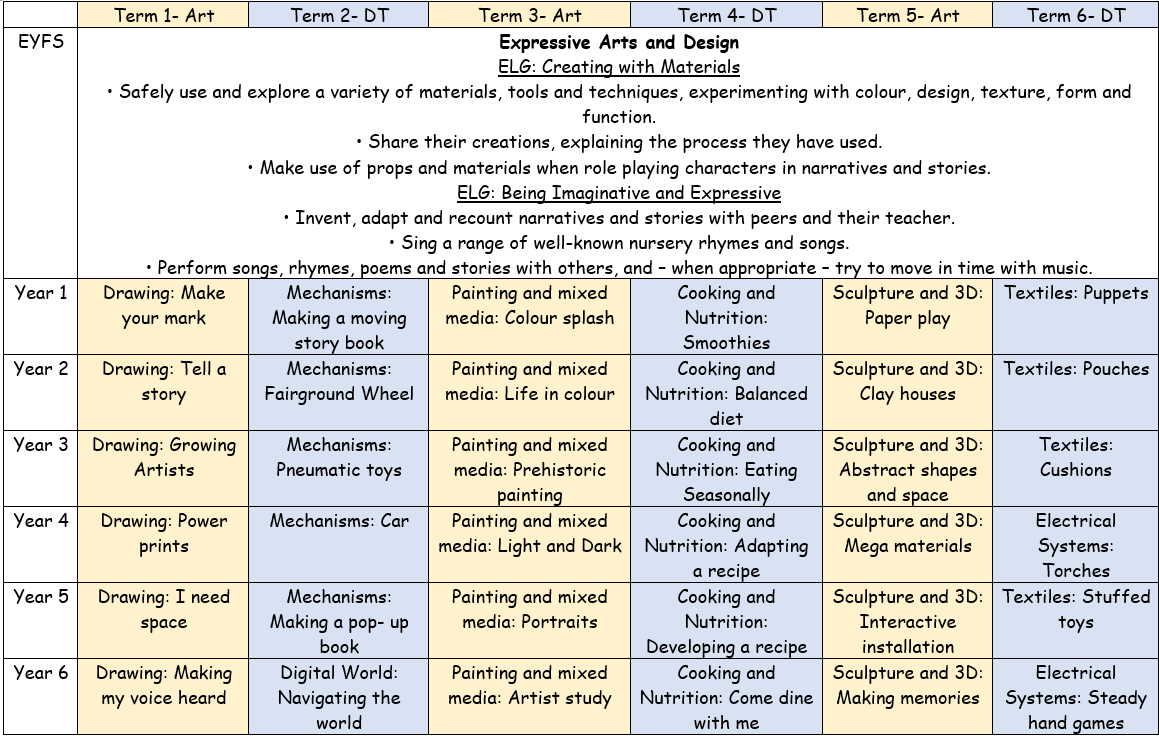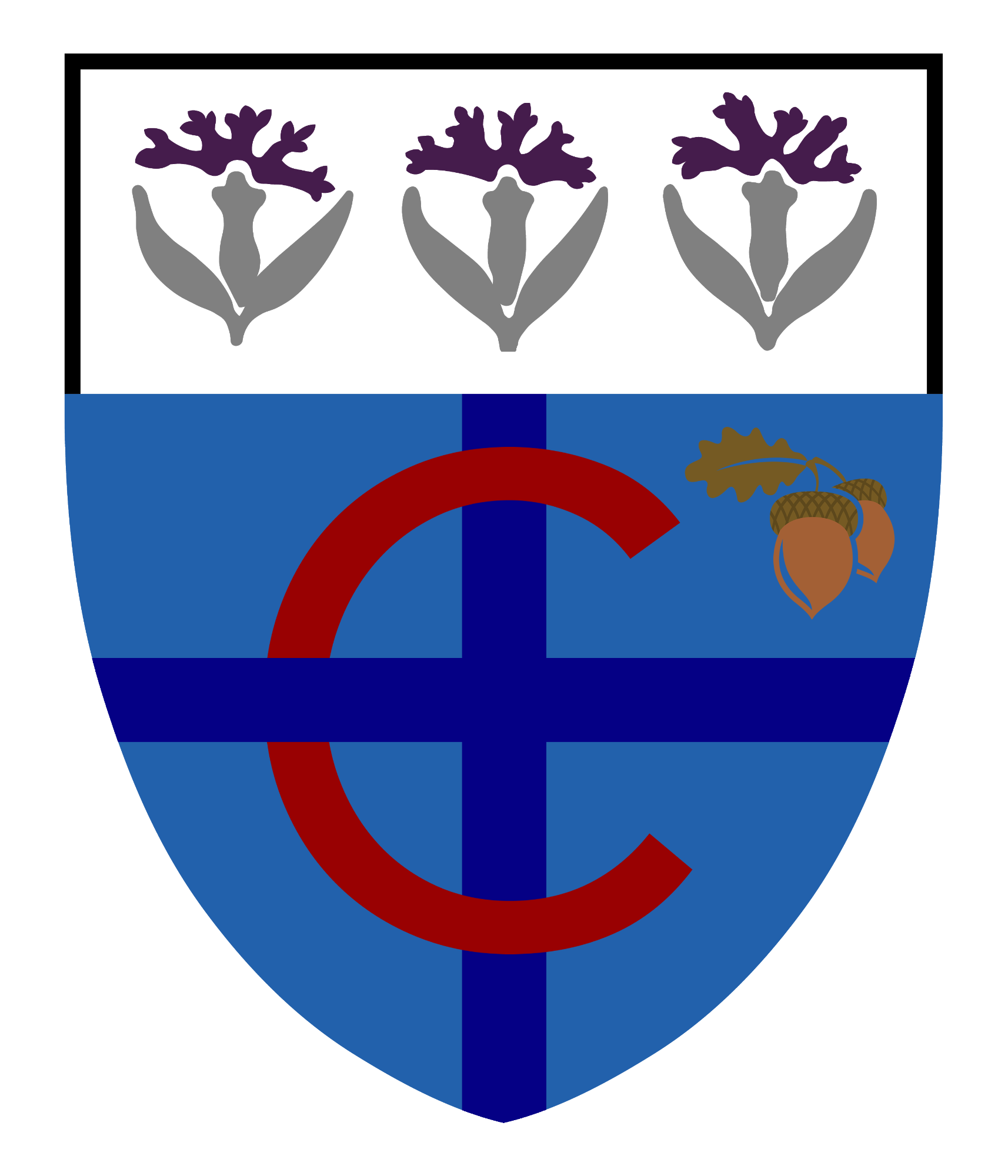Art and Design Technology
Art and Design Technology Curriculum Statement
Our School Vision:
“The rain came down, the streams rose, and the winds blew and beat against that house; yet it did not fall, because it had its foundation on the rock.” (Matthew 7:25)
Bishop Chavasse Church of England School Policies are all underpinned by our school parable ‘The Wise and the Foolish Builder.’
Jesus is at the heart of Christianity. As a church school we believe that, like the wise man, those who are guided by the word of God in the Bible and trust in him will become wise, compassionate and honest; be empowered to weather all storms, help one another flourish and make a difference in the world.
Bishop Chavasse School knows and values every wonderfully and uniquely created child and adult. Supported by faith, we establish firm foundations for our children to become resilient, curious, confident, community minded courageous advocates who flourish and thrive. We build on and support the development of the whole person in a safe, happy Christian environment. We inspire everyone to fulfil their potential through our high expectations and a broad, creative and inspirational curriculum; rich in opportunity to develop culture capital, have fun and partake in adventures. Everyone will develop an everlasting love of learning. Our dedicated, passionate staff, supported by parents, Governors and the Tenax Schools Trust are committed to nurturing our community to achieve excellence together in an environment where everyone is wise, trustworthy and compassionate. Pupils will make everlasting friendships and exciting life-long memories.

Intent
At Bishop Chavasse CE Primary School, we value Art and Design as an important part of the children’s entitlement to a broad and balanced curriculum. Art and Design provides the children with the opportunities to develop and extend skills and an opportunity to express their individual interests, thoughts and ideas.
Art, craft and design embody some of the highest forms of human creativity. A high-quality art and design education should engage, inspire and challenge pupils, equipping them with the knowledge and skills to experiment, invent and create their own works of art, craft and design. As pupils progress, they should be able to think critically and develop a more rigorous understanding of art and design. They should also know how art and design reflect and shape history and values from varied cultures, and contribute to culture, creativity and wealth around the world. At Bishop Chavasse Primary School, we use Kapow Art and Design Technology to shape and enhance our Art and DT curriculum. The scheme is designed to give all pupils every opportunity to develop their ability, nurture their talent and interests, express their ideas and thoughts about the world around them, as well as learn about art, artists, cultures and history.
Aims
The national curriculum for Art and Design aims to ensure that all pupils:
- Produce creative work, exploring their ideas and recording their experiences
- Become proficient in drawing, painting, sculpture and other art, craft and design techniques
- Evaluate and analyse creative works using the language of art, craft and design
- Know about great artists, craft makers and designers, and understand the historical and cultural development of their art forms.
Implementation
The teaching and implementation of the Art and Design Curriculum at Bishop Chavasse CE Primary School is based on the National Curriculum covered by Kapow Art and Design. All units of lessons are sequential, allowing children to build their skills and knowledge, applying them to a range of outcomes. Key skills are revisited across the year groups with increasing complexity in a spiral curriculum mode.
Through the design of the units, there are five strands that run throughout. These are:
- Generating ideas
- Using Sketchbooks
- Making skills, including formal elements
- Knowledge of artists
- Evaluating and analysing
At Bishop Chavasse, we teach art or DT for one lesson a week, alternating terms linked to their termly topic work.
Early Years Foundation Stage
Pupils explore and use a variety of media and materials through a combination of child initiated and adult directed activities. They have opportunities to learn to:
- Explore the textures, movement, feel and look of different media and materials
- Respond to a range of media and materials, develop their understanding of them in order to manipulate and create different effects.
- Use different media and materials to express their own ideas
- Explore colour and use for a particular purpose
- Develop skills to use simple tools and techniques competently and appropriately
- Select appropriate media and techniques and adapt their work where necessary
Key stage 1
Pupils are taught:
- To use a range of materials creatively to design and make products
- To use drawing, painting and sculpture to develop and share their ideas, experiences and imagination
- To develop a wide range of art and design techniques in using colour, pattern, texture, line, shape, form and space
- About the work of a range of artists, craft makers and designers, describing the differences and similarities between different practices and disciplines, and making links to their own work.
Key stage 2
Pupils are taught to develop their techniques, including their control and their use of materials, with creativity, experimentation and an increasing awareness of different kinds of art, craft and design and varied art and DT mediums.
Pupils are taught:
- To create sketch books to record their observations and use them to review and revisit ideas
- To improve their mastery of art and design techniques and mediums, including drawing, painting and sculpture with a range of materials [for example, pencil, charcoal, paint, clay, canvas, card, paper]
- About great artists, architects and designers in history.
Impact
In KS1 and KS2 teachers use ongoing formative assessments to inform future lessons; ensuring children are supported and challenged appropriately. Children in Foundation Stage are assessed within Expressive Arts and Design as part of their seven key areas of learning and their progress is tracked termly. Age related expectation levels are reported to parents at the end of the reception year.
The impact of this curriculum design will lead to excellent progress over time, across key stages, relative to a child’s individual starting point and their progression of skills as well as fostering a love of and enthusiasm for the subject. They will learn that art and DT has changed our lives and understand that it is vital to the world’s future prosperity. This is evidenced in a range of ways, including pupil voice, their work and their enjoyment for art and DT.
Children will leave Bishop Chavasse school as curious, confident learners with positive attitudes and compassion towards other cultures, peoples and languages and a better appreciation of our own art, culture, history and way of life.
